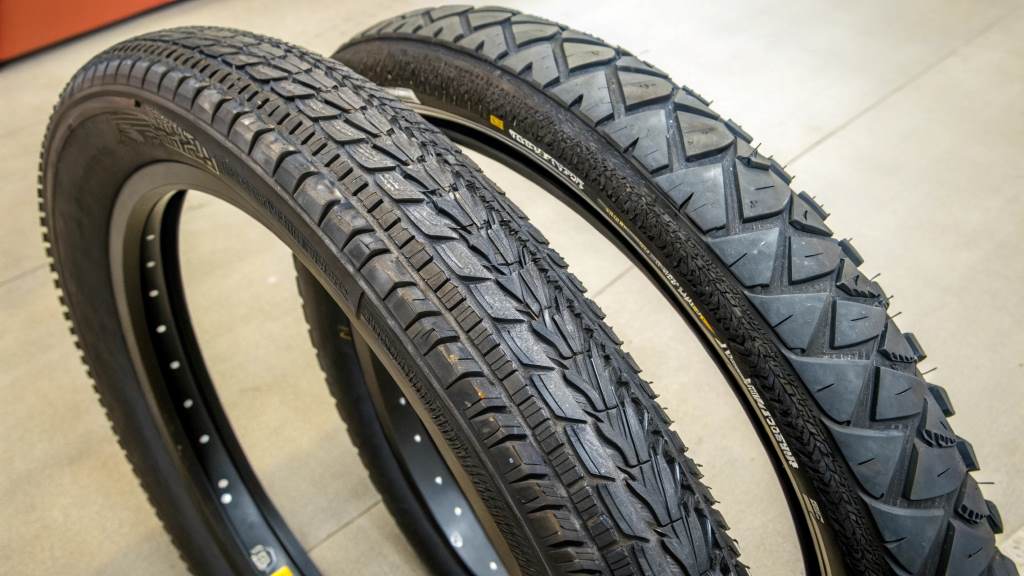Mountain biking, a sport defined by its inherent diversity, demands adaptability. From the gnarly, rock-strewn descents of alpine trails to the smooth, flowing singletrack of local parks, riders often face a perplexing question: how to optimize their tire choice for a spectrum of conditions? This is where hybrid tires mountain biking enter the conversation, a category often overlooked but potentially transformative for many riders.
While traditional mountain bike tires are typically specialized for either aggressive grip or low rolling resistance, hybrid tires aim to strike a balance, offering a versatile solution for those seeking a “do-it-all” option. This article delves deep into the world of hybrid mountain bike tires, exploring their design, performance characteristics, and suitability for various riding styles.
Understanding the Hybrid Tire Philosophy: Bridging the Gap
The core philosophy behind hybrid mountain bike tires lies in bridging the gap between dedicated cross-country (XC) and trail tires. XC tires, designed for speed and efficiency, often feature low-profile tread patterns that prioritize rolling resistance reduction. Conversely, trail tires boast aggressive knobs and robust sidewalls, maximizing grip and durability in challenging terrain. Hybrid tires, therefore, attempt to blend these attributes.
They typically feature a moderately aggressive tread pattern, offering sufficient grip for varied surfaces while maintaining a respectable level of rolling efficiency. This makes them ideal for riders who encounter a mix of terrains, from paved bike paths and gravel roads to moderately technical singletrack.
Tread Patterns: A Symphony of Compromise and Capability

The tread pattern of a hybrid mountain bike tire is a crucial determinant of its performance. These tires often feature a central tread section designed for low rolling resistance on smoother surfaces, incorporating closely spaced knobs or a continuous center ridge. Moving outwards, the shoulder knobs typically become more pronounced and spaced further apart, providing cornering grip and traction in loose or soft conditions.
The height and shape of the knobs are carefully engineered to balance grip and rolling resistance. For instance, a hybrid tire might feature moderately tall, ramped center knobs for efficient rolling and slightly taller, more aggressive shoulder knobs for cornering confidence.
Casing and Sidewall Considerations: Durability and Suppleness
Beyond the tread pattern, the casing and sidewall construction of a hybrid tire play a significant role in its overall performance and durability. A robust casing protects the tire from punctures and cuts, essential for riding in rocky or debris-strewn environments. However, a heavier casing can also increase rolling resistance and reduce suppleness, impacting ride quality.
hybrid tires mountain biking often employ a compromise between weight and durability, utilizing reinforced sidewalls to enhance puncture protection without adding excessive weight. Some manufacturers also incorporate tubeless-ready designs, allowing riders to run lower tire pressures for improved traction and comfort. Explore Flat vs. Clipless Pedals.
Rubber Compounds: Balancing Grip, Durability, and Rolling Resistance
The rubber compound used in a hybrid tire is another critical factor influencing its performance. Softer compounds offer superior grip, especially in wet or slippery conditions, but tend to wear down faster. Harder compounds, on the other hand, provide greater durability and lower rolling resistance but may sacrifice grip in challenging terrain.
Hybrid tire manufacturers often utilize dual or triple compounds, incorporating a harder rubber in the center for durability and a softer compound on the shoulders for enhanced cornering grip. This approach allows for a balance of performance characteristics, catering to the diverse demands of hybrid riding.
Performance on Different Terrains: Where Hybrids Shine
Hybrid tires excel in scenarios where riders encounter a mix of terrains. They are particularly well-suited for:
- Mixed Terrain Rides: Riders who frequently transition between paved roads, gravel paths, and singletrack will appreciate the versatility of hybrid tires.
- Trail Riding with Moderate Technicality: Hybrid tires can handle moderately technical trails with loose dirt, rocks, and roots, providing sufficient grip and control.
- Bike Packing and Adventure Riding: The durability and versatility of hybrid tires make them an excellent choice for bike packing and adventure riding, where riders may encounter a wide range of surfaces.
- Urban and Commuting: For those who use their mountain bikes for commuting or urban exploration, hybrid tires offer a comfortable and efficient ride on paved surfaces.
- Beginner and Intermediate Riders: Hybrid tires can be a great option for beginner and intermediate riders who are still developing their skills and exploring different types of trails.
Limitations of Hybrid Tires: Understanding the Trade-offs
While hybrid tires offer versatility, they are not without limitations. In highly specialized scenarios, dedicated tires will generally outperform hybrids. For instance:
- Extreme Downhill and Enduro: Riders tackling steep, technical descents with large drops and rock gardens will benefit from the superior grip and durability of dedicated downhill or enduro tires.
- Competitive Cross-Country Racing: Racers seeking maximum efficiency and speed on groomed XC courses will prefer lightweight, low-rolling-resistance XC tires.
- Muddy and Soft Conditions: In extremely muddy or soft conditions, tires with aggressive, widely spaced knobs will provide superior traction compared to hybrid tires.
Choosing the Right Hybrid Tire: Key Considerations
When selecting a hybrid mountain bike tire, consider the following factors:
- Intended Use: Determine the primary types of terrain you will be riding on.
- Tread Pattern: Choose a tread pattern that balances grip and rolling resistance for your riding style.
- Casing and Sidewall: Select a casing and sidewall construction that offers adequate puncture protection without adding excessive weight.
- Rubber Compound: Consider the balance between grip, durability, and rolling resistance offered by the rubber compound.
- Tire Width: Choose a tire width that matches your riding style and the clearance of your bike frame.
- Tubeless Compatibility: If you prefer running tubeless tires, ensure the tire is tubeless-ready.
- Budget: Hybrid tires are available at a wide range of price points.
People Also Ask (FAQs):
Are hybrid tires good for long-distance mountain biking?
Yes, hybrid tires are often a good choice for long-distance mountain biking, especially if you anticipate encountering a mix of terrains. Their versatility and durability make them suitable for bike packing and adventure riding.
Can I use hybrid tires on a full-suspension mountain bike?
Yes, you can use hybrid tires on a full-suspension mountain bike. They can provide a good balance of grip and rolling resistance for trail riding and mixed terrain adventures.
Are hybrid tires good for wet conditions?
The performance of hybrid tires in wet conditions depends on the tread pattern and rubber compound. Tires with softer compounds and more aggressive shoulder knobs will offer better grip in wet conditions.
How long do hybrid tires last?
The lifespan of hybrid tires depends on various factors, including the rubber compound, riding conditions, and tire pressure. Harder compounds and less aggressive riding styles will generally result in longer tire life.
Are hybrid tires good for gravel riding?
Yes, many hybrid MTB tires are excellent for gravel riding. The balance of rolling resistance and grip makes them a great option for varied gravel surfaces.
Conclusion: Embracing Versatility for Enhanced Riding Experiences
Hybrid tires mountain biking represent a valuable option for riders seeking versatility and adaptability. While they may not excel in highly specialized scenarios, they offer a compelling balance of grip, rolling resistance, and durability for a wide range of riding conditions. For riders who enjoy exploring diverse trails, tackling mixed terrain adventures, or simply seeking a comfortable and efficient ride, hybrid tires can be a game-changer.
By carefully considering the factors outlined in this article, riders can select the ideal hybrid tires to enhance their riding experiences and unlock new possibilities on the trails. Ultimately, the right hybrid tire can transform your mountain bike into a true all-rounder, ready to tackle whatever adventure lies ahead.

Taylor is an outdoors & sports equipment specialist, sports author, bike traveler, bicycling and skating expert, and smoke-free ride activist. He is also a regular reviewer of outdoor sports gadgets and accessories. About safety gear and biking facts he analyzes and gives his feedback to outdoorxsports. Writes and tests to help him, you, and us.

